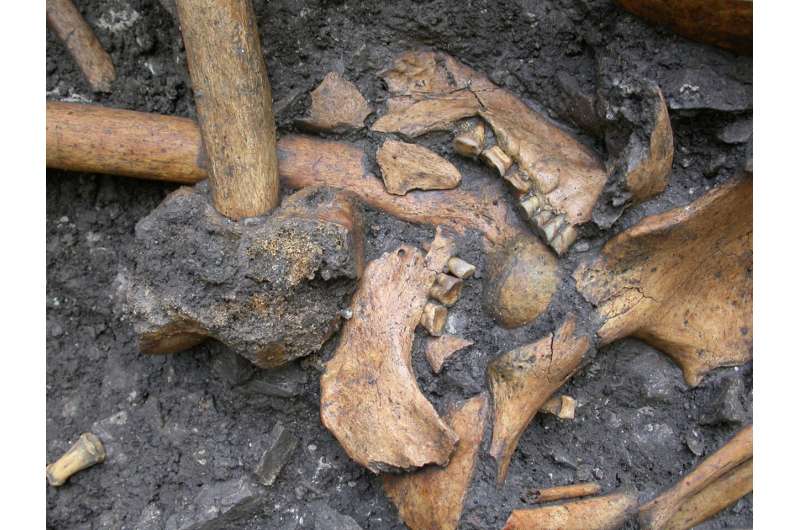July 27, 2021 report
Oral biome change during shift from foraging to farming not as dramatic as in recent years

A team of researchers affiliated with several institutions in Italy, the US and Austria has found that changes to the human oral biome during the shift from foraging to farming were not nearly as dramatic as those that have occurred in modern times. In their paper published in Proceedings of the National Academy of Sciences, the group describes their analysis of dental records covering thousands of years and what it showed them about changes to the microbiome in the human mouth.
Modern humans began the transition from foraging to farming during the Neolithic—at the end of the Stone Age, approximately 10,000 years ago. In this new effort, the researchers wondered if the oral microbiome of people changed as people began eating more food they grew themselves. To find out, they conducted an extensive DNA analysis of dental calculus (mineralized plaque) from the remains of 28 ancient people found in what is now the Danube Gorges region which covers parts of Croatia and Romania—along with 10 samples from people who once lived in central Italy and a dozen from people who once lived in what is now northwestern Italy. The age of the specimens ran from the Neolithic all the way to the Middle Ages.
In looking at their data, the researchers found that the gradual change to farming did not impact the human oral biome in any significant way. The most noticeable was an uptick in microbes of the 807-oral taxon—which diversified geographically—as well as the discovery that Streptococcus sanguinis became more common in foragers during the Mesolithic. Also, they saw that the Anaerolineaceae bacterium became more diverse and, in some cases, displaced other variants. They also noticed slight differences in multiple species between people who lived in Italy and those who lived in the Balkans. None of the changes they saw came close, however, to the changes that have occurred in the much more recent past—since antibiotics have been introduced into the oral biome. Antibiotic resistance in microbes has led to significant evolutionary changes.
More information: Claudio Ottoni et al, Tracking the transition to agriculture in Southern Europe through ancient DNA analysis of dental calculus, Proceedings of the National Academy of Sciences (2021). DOI: 10.1073/pnas.2102116118
Journal information: Proceedings of the National Academy of Sciences
© 2021 Science X Network





















